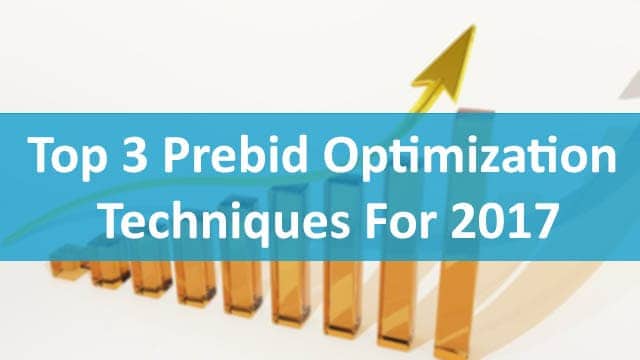
This post was most recently updated on July 11th, 2019
Last year, header bidding became a significant factor in the ad industry. Since then it has completely disrupted programmatic advertising. Multiple ad tech companies have started their header bidding solutions, and medium to large publishers have taken advantage of this tool to maximize their yield.
Despite the advancement in header bidding, it is still relatively new, and everyone is experimenting to find that sweet spot between maximized revenue and good user experience. Every website and user are unique so achieving a suitable outcome is tricky.
Also, every publisher has a set of priorities regarding user experience and revenue. However don’t fret, we’ll show you two of our most successful Prebid optimization techniques here today.
First of all, before we begin with the techniques, make sure that you’re using a good and reliable open source wrapper. A wrapper is a snippet of JavaScript code that gives you the flexibility to run multiple header bidder partners at the same time. When selecting a wrapper, you need to make sure that your wrapper treats all bid partners fairly and does not prioritize any of them.
Another thing that you should take into consideration is to use an asynchronous wrapper. This will ensure that all ad calls from your partners are triggered at the same time and will not block the page load. Choosing the right wrapper is quite a challenge. Well, no need to look any further. MonetizeMore, the global leader in ad optimization, offers its state of the art and best in class Header Bidding Solution.
Bid Scaling is one of the most important and critical strategies for header bidding. This technique refers to making sure that bidders have a fair competition when they bid for a particular impression. Now, you might ask why is there a need for a fair competition? Take note that a wrapper holds many bidders (i.e., OpenX, AppNexus, etc.).
There are cases where the reported revenue on the bidder’s dashboard doesn’t match what the report coming from the ad server (i.e. Google DFP). In the perfect world, there should be no discrepancy. In reality, we might experience some difference. This means we need to adjust the bid rate of each bidder based on their discrepancy rate to ensure fair competition.
For example: let’s say the recorded revenue of OpenX on the dashboard is $900. However, the ad server’s income shows $1000 for the same bidder. Based on the data provided, the discrepancy percentage is 10%.
As a result, we will need to deduct 10% at the bid rate of the bidder every time it bids for an impression going forward. This process must be repeated as frequently as possible, ideally on a daily basis.
Header Bidding is still a relatively new technology. There’s still no magic formula that works for every publisher. Still, the best way to be in the Goldilocks zone is to test several combinations that will yield a balanced result between revenue and user experience.
Most would say that the ideal number of bid partners is 10. In our experience, the more bidders you include, the higher the revenue because it increases competition. However, more bidders add latency to the page and increase timeout rates which can decrease page RPMs.
When you decide which bidders to add, you should leave the decision to the numbers and run multivariate tests of every combination of bidders to objectively determine whether a bidder is adding value to your ad inventory and is worth keeping. That’s why it’s important that you continuously monitor and evaluate each bid partner that you add to your stack. Measure them regarding their response rate, bid rate, and win rate as well.
If one of the header bidder partners consistently fails to respond, you might want to check if your timeout rate is too short and adjust it accordingly. Evaluate which of your bid partners regularly submits their bid request. If the bid price is unexpectedly low, it could mean that this particular bid partner has no demand.
Furthermore, among your bid partners, figure out which of your bid partners are steadily winning bids. You might want to ditch those that are doing poorly. And lastly, track both the impressions and revenue discrepancy and make sure to bid scale them accordingly.
For more about header bidding and Prebid visit this page: www.monetizemore.com/prebid-header-bidding-solutions
Remember that when it comes to header bidding, you should not take anything for granted. You need to test, monitor and analyze the data that you collect continually, evaluate the result and adapt to hone your process.
These techniques are very technical and require many skills to implement correctly. It can be hard, especially if don’t have enough background knowledge to tinker with header bidding. If you’d like to use header bidding on your website why not contact us and we’ll set up and manage it for you. Sign up here to get started.

Kean Graham is the CEO and founder of MonetizeMore & a pioneer in the Adtech Industry. He is the resident expert in Ad Optimization, covering areas like Adsense Optimization,GAM Management, and third-party ad network partnerships. Kean believes in the supremacy of direct publisher deals and holistic optimization as keys to effective and consistent ad revenue increases.
10X your ad revenue with our award-winning solutions.